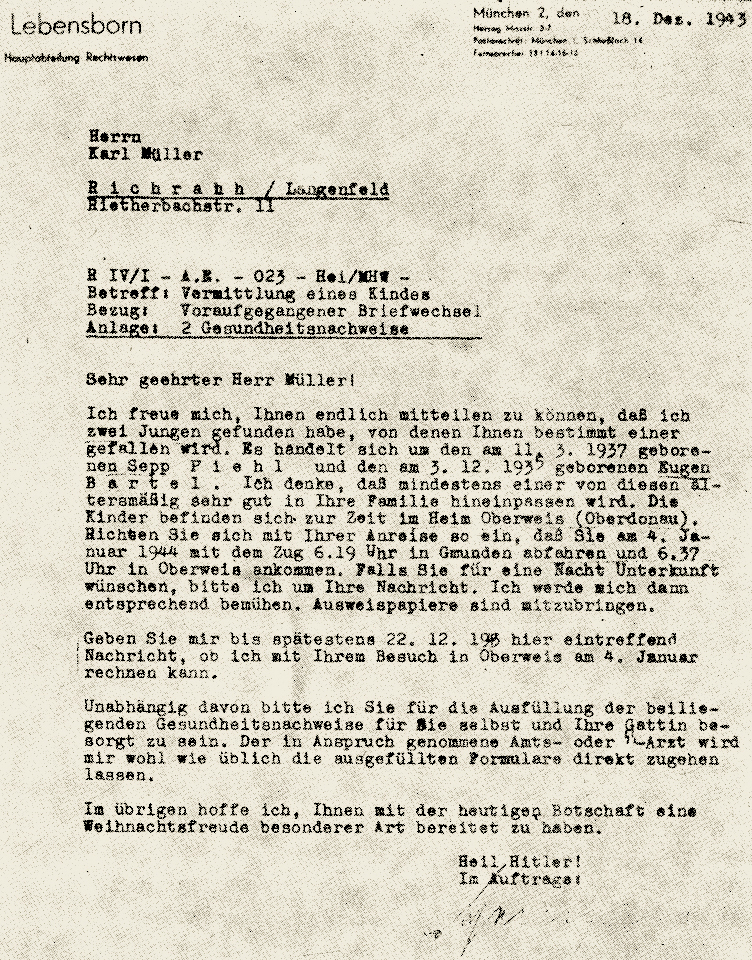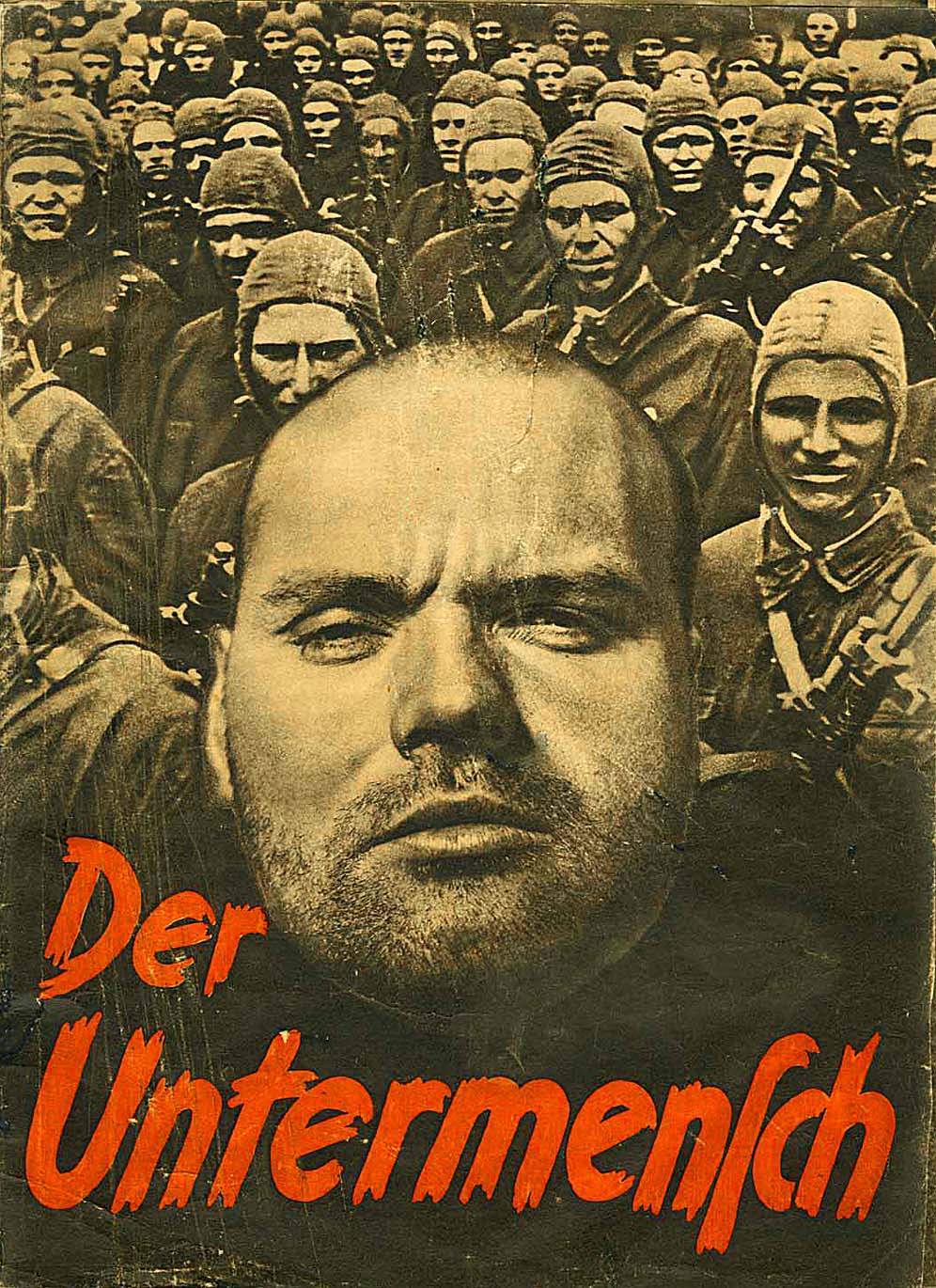|
Heuaktion
''Heuaktion'' (German: "hay harvest", or "hay operation") was a World War II operation in which 40,000 to 50,000 Polish and Ukrainian children aged 10 to 14 were kidnapped by German occupation forces and transported to Nazi Germany as slave labourers. "''Heuaktion''" was an acronym for "Homeless, parentless, unhoused 'heimatlos, elternlos, unterkunftslos'' – ''HEU'', "hay"Operation". On arrival in Germany, the children were turned over to Organisation Todt and to the Junkers aircraft works. The intentions of the mass abductions were to pressure the adult populations of the occupied territories to register as workers in the Reich and to weaken the “biological strength” of the areas that Germany had invaded. Lynn H. Nicholas, ''Cruel World: The Children of Europe in the Nazi Web'' p 351 Background Alfred Rosenberg, head of the Reich Ministry for the Occupied Eastern Territories, originally feared that targeting children aged 10 to 14 would be seen as simple abduction, a ... [...More Info...] [...Related Items...] OR: [Wikipedia] [Google] [Baidu] |
Kidnapping Of Children By Nazi Germany
During World War II, around 200,000 ethnic Polish children as well as an unknown number of children of other ethnicities were abducted from their homes and forcibly transported to Nazi Germany for purposes of Forced labour under German rule during World War II, forced labour, Nazi human experimentation, medical experimentation, or Germanization. This was among the most notable Nazi crimes against children. An aim of the project was to acquire and "Germanize" children believed to have Aryan race, Aryan/Nordic race, Nordic traits because Nazi officials believed that they were the descendants of German settlers who had emigrated to Poland. Those labelled "racially valuable" (''gutrassig'') were Forced assimilation, forcibly assimilated in centres and then Forced adoption, forcibly adopted to German families and SS Home Schools. An association, "Stolen Children: Forgotten Victims" (''Geraubte Kinder – Vergessene Opfer e.V.''), is active in Germany, representing victims of German kid ... [...More Info...] [...Related Items...] OR: [Wikipedia] [Google] [Baidu] |
OST-Arbeiter
' (, "Eastern worker") was a Nazi German designation for foreign slave workers gathered from occupied Central and Eastern Europe to perform forced labor in Germany during World War II. The Germans started deporting civilians at the beginning of the war and began doing so at unprecedented levels following Operation Barbarossa in 1941. They apprehended from the newly-formed German districts of Reichskommissariat Ukraine, District of Galicia (itself attached to the General Government), and Reichskommissariat Ostland. These areas comprised German-occupied Poland and the conquered territories of the Soviet Union. According to Pavel Polian, although the from most occupied territories were predominantly men, of the "eastern workers" taken from occupied Soviet territories over 50% were women, and of those from Poland nearly 30% were women. Eastern workers included ethnic Ukrainians, Poles, Belarusians, Russians, Armenians, Tatars, and others. Estimates of the number of range be ... [...More Info...] [...Related Items...] OR: [Wikipedia] [Google] [Baidu] |
Henning Von Tresckow
Henning Hermann Karl Robert von Tresckow (; 10 January 1901 – 21 July 1944) was a German military officer with the rank of major general in the German Army who helped organize German resistance against Adolf Hitler. He attempted to assassinate Hitler on 13 March 1943 and drafted the Valkyrie plan for a coup against the German government. He was described by the Gestapo as the "prime mover" behind the plot of 20 July 1944 to assassinate Hitler.Fest 1997, p. 236. He committed suicide at Królowy Most on the Eastern Front upon learning of the plot's failure. Early life Tresckow was born in Magdeburg into a noble family from the Brandenburg region of Prussia with 300 years of military tradition that provided the Prussian Army with 21 generals.Balfour 1988, pg. 124. His father, Leopold Hans Heinrich Eugen Hermann von Tresckow, later a cavalry general, had been present at Kaiser Wilhelm I's coronation as the emperor of new German Empire at Versailles in 1871. His mother, Mar ... [...More Info...] [...Related Items...] OR: [Wikipedia] [Google] [Baidu] |
Kinder Kz
Kinder is the German word for "children"; it may also refer to: Businesses * Kinder, a trademark of Ferrero, an Italian confectioner: ** Kinder Surprise **Kinder Chocolate bars ** Kinder Happy Hippo ** Kinder Bueno ** Kinder Joy * Kinder Morgan Energy Partners, a United States energy company Places ;United Kingdom * Kinder Scout, a moorland plateau in Northern England **Kinder, Derbyshire, a township in the ancient parish of Glossop in England *The River Kinder, a tributary of the River Sett, Derbyshire ;United States * Kinder, Indiana, a village * Kinder, Louisiana, a town * Kinder, Missouri, an unincorporated community * Kinder, West Virginia, an unincorporated community People * Kinder (surname) Other uses *Kinder (goat), a breed of goat *, a British coastal tanker * Virtus Pallacanestro Bologna, known as ''Kinder Bologna'' between 1996 and 2002 * Kinder Foundation, non-profit organisation, gives grants to projects based in Houston, Texas See also *" Kinder, Küche, Ki ... [...More Info...] [...Related Items...] OR: [Wikipedia] [Google] [Baidu] |
Concentration Camp
A concentration camp is a prison or other facility used for the internment of political prisoners or politically targeted demographics, such as members of national or ethnic minority groups, on the grounds of national security, or for exploitation or punishment. Prominent examples of historic concentration camps include the British confinement of non-combatants during the Second Boer War, the Internment of Japanese Americans, mass internment of Japanese-Americans by the US during the Second World War, the Nazi concentration camps (which later morphed into extermination camps), and the Soviet labour camps or gulag. History Definition The term ''concentration camp'' originates from the Spanish–Cuban Ten Years' War when Spanish forces detained Cuban civilians in camps in order to more easily combat guerrilla forces. Over the following decades the British during the Second Boer War and the Americans during the Philippine–American War also used concentration camps. The term "c ... [...More Info...] [...Related Items...] OR: [Wikipedia] [Google] [Baidu] |
Genocide
Genocide is violence that targets individuals because of their membership of a group and aims at the destruction of a people. Raphael Lemkin, who first coined the term, defined genocide as "the destruction of a nation or of an ethnic group" by means such as "the disintegration of [its] political and social institutions, of [its] cultural genocide, culture, linguicide, language, national feelings, religious persecution, religion, and [its] economic existence". During the struggle to ratify the Genocide Convention, powerful countries restricted Lemkin's definition to exclude their own actions from being classified as genocide, ultimately limiting it to any of five "acts committed with intent to destroy, in whole or in part, a national, ethnical, racial or religious group". While there are many scholarly Genocide definitions, definitions of genocide, almost all international bodies of law officially adjudicate the crime of genocide pursuant to the Genocide Convention. Genocide has ... [...More Info...] [...Related Items...] OR: [Wikipedia] [Google] [Baidu] |
Untermensch
''Untermensch'' (; plural: ''Untermenschen'') is a German language word literally meaning 'underman', 'sub-man', or ' subhuman', which was extensively used by Germany's Nazi Party to refer to their opponents and non- Aryan people they deemed as inferior. It was mainly used against "the masses from the East", that is Jews, Roma, and Slavs (mainly ethnic Poles, Belarusians, Czechs, Ukrainians, Russians and Serbs). The term was also applied to "'' Mischling''" (persons of mixed "Aryan" and non-Aryan ancestry) and black people. Jewish, Slavic, and Romani people, along with the physically and mentally disabled, as well as homosexuals and political dissidents, and on rare instances, POWs from Western Allied armies, were considered untermenschen who were to be exterminated in the Holocaust. According to the '' Generalplan Ost'', the Slavic population of East-Central Europe was to be reduced in part through mass murder in the Holocaust for ''Lebensraum'', with a significant ... [...More Info...] [...Related Items...] OR: [Wikipedia] [Google] [Baidu] |
Germanisation
Germanisation, or Germanization, is the spread of the German language, people, and culture. It was a central idea of German conservative thought in the 19th and the 20th centuries, when conservatism and ethnic nationalism went hand in hand. In linguistics, Germanisation of non-German languages also occurs when they adopt many German words. Under the policies of states such as the Teutonic Order, Austria, the Kingdom of Prussia, and the German Empire, non-German minorities were often discouraged or even prohibited from using their native language, and had their traditions and culture suppressed in the name of linguistic imperialism. In addition, the Government also encouraged immigration from the Germanosphere to further upset the linguistic balance, but with varying degrees of success. In Nazi Germany, linguistic Germanisation was replaced by a policy of genocide against certain ethnic groups like Poles, Baltic natives, and Czechoslovaks, even when they were already German-spea ... [...More Info...] [...Related Items...] OR: [Wikipedia] [Google] [Baidu] |
Generalplan Ost
The (; ), abbreviated GPO, was Nazi Germany's plan for the settlement and "Germanization" of captured territory in Eastern Europe, involving the genocide, extermination and large-scale ethnic cleansing of Slavs, Eastern European Jews, and other indigenous peoples of Eastern Europe categorized as "'' Untermenschen''" in Nazi ideology. The campaign was a precursor to Nazi Germany's planned colonisation of Central and Eastern Europe by Germanic settlers, and it was carried out through systematic massacres, mass starvations, chattel labour, mass rapes, child abductions, and sexual slavery. ''Generalplan Ost'' was only partially implemented during the war in territories occupied by Germany on the Eastern Front during World War II, resulting indirectly and directly in the deaths of millions by shootings, starvation, disease, extermination through labour, and genocide. However, its full implementation was not considered practicable during major military operations, and neve ... [...More Info...] [...Related Items...] OR: [Wikipedia] [Google] [Baidu] |
Forced Labour Under German Rule During World War II
The use of Slavery, slave and forced labour in Nazi Germany () and throughout German-occupied Europe during World War II took place on an unprecedented scale. It was a vital part of the Economics of fascism#Political economy of Nazi Germany, German economic exploitation of conquered territories. It also contributed to the mass extermination of populations in occupied Europe. The Germans abducted approximately 12million people from almost twenty European countries; about two thirds came from Central Europe and Eastern Europe.Part1 an Part 2 . Many workers died as a result ... [...More Info...] [...Related Items...] OR: [Wikipedia] [Google] [Baidu] |
Genocide
Genocide is violence that targets individuals because of their membership of a group and aims at the destruction of a people. Raphael Lemkin, who first coined the term, defined genocide as "the destruction of a nation or of an ethnic group" by means such as "the disintegration of [its] political and social institutions, of [its] cultural genocide, culture, linguicide, language, national feelings, religious persecution, religion, and [its] economic existence". During the struggle to ratify the Genocide Convention, powerful countries restricted Lemkin's definition to exclude their own actions from being classified as genocide, ultimately limiting it to any of five "acts committed with intent to destroy, in whole or in part, a national, ethnical, racial or religious group". While there are many scholarly Genocide definitions, definitions of genocide, almost all international bodies of law officially adjudicate the crime of genocide pursuant to the Genocide Convention. Genocide has ... [...More Info...] [...Related Items...] OR: [Wikipedia] [Google] [Baidu] |








